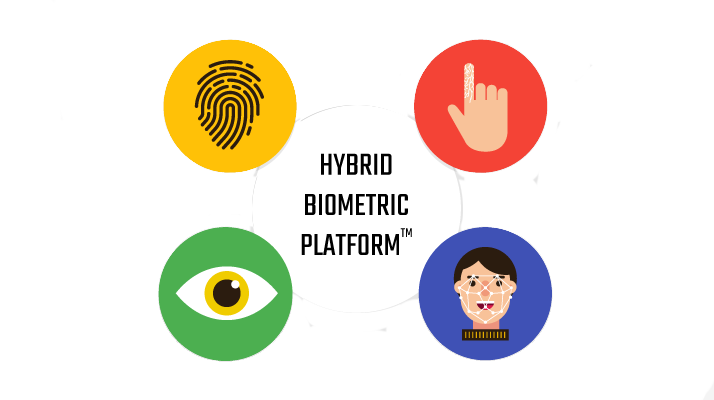What are the biometrics authentication methods?

Biometrics, in the simplest sense, is the measurement of the human body. It is the science of analyzing physical or behavioral attributes distinct to each person in order to be able to validate their individuality. Biometrics authentication is replacing traditional passwords and PINs day by day and within four years we can see rapid adoption of it according to a study governed by Strategy Analytics.
There are different methods of biometric data gathering and reading according to your requirements. There is no one method which does the perfect job for everyone. Government agency or law enforcement agency might require some form of scalable biometric authentication methods whereas a small business farm could do with another form of authentication methods. These methods are also known as modalities. Here are 3 of the top modalities which will help you decide the best modality for your business:
- FingerPrint
Fingerprint technology is the oldest form of biometric authentication method and it is one of most accurate. It has a near-universal physical trait which reduces cases of fraud and provides safe access to specific places. It is a very popular and widely used technology due to its near-universal physical trait and they are small and inexpensive. Applications of this method can be found in building and car doors, border control and other highly secured places like military bases, government agencies etc.
Fingerprint technology will be beneficial for any organization if it can be correctly deployed. With this technology employee identification and workforce management gets speedier, efficient and accurate. Employees do not have to carry magnetic strips or remember their passwords as they are carrying their fingerprint with them always. Fingerprints cannot be lost or forged. With the implementation of fingerprint authentication method, organizations can save a huge amount of money by preventing buddy punching and ghost employees. The technology greatly diminishes such fraudulent behavior.
Fingerprint biometric authentication method is the most dominant form of biometric technology and it is forecasted that by 2020 the market will hit approximately $25 billion.
- Finger Vein
Hitachi, a Japanese information technology company, first introduced the finger vein recognition system back in 2004. They pounce on the chance by finding out that near-infrared lights can be used to scan finger veins. It is the same technology in-principle as fingerprint technology. But the finger vein technology has greater accuracy rate than fingerprint technology. The technology has lower False Rejection Rate (FRR) as well as lower False Acceptance Rate (FAR). Additionally, finger vein authentication method doesn’t require you to place your finger on a scanner for the purpose of scanning. So it is more hygienic and has a low maintenance cost than all the other methods which require contact, hence cleaning the scanner surface on a regular basis. By not touching any scanning surface the subject is not leaving any latent prints. It is greatly diminishing the chance of any culprits to duplicate by forging or lifting. Finger vein’s one of the vital traits is it never gets affected by anything. The subject’s biometric stored data can be used for a lifetime as it is a technology which scans beneath the finger surface.
- Iris
If you are living in Chicago or Montreal, you will see people taking out cash from ATMs by just looking at them. The biometric recognition system these financial organizations adopted is called iris recognition and it was first created by John G. Daugman. Iris is an organ which is located in human eyes and its structure remain same all throughout a person’s life. Due to this reason, the biometric industry has quickly adopted the technology of its very own and it is one of the most trusted authentication methods to identify a person.
Mechanism of iris recognition is simple. First, the device detects the location of the pupil followed by detection of individual’s iris and eyelids. Then to keep only the iris part from the image, unnecessary parts like eyelids and eyelashes are clipped out. Then the remaining part which is iris portion of the high-quality image is divided into blocks and converted into biometric values to quantify the image. The data then kept on a matching server to use whenever the specific person is needed to be identified by the system.
Iris authentication method is getting many accolades nowadays because it is highly accurate and fast, remains unchanged throughout life, recognition can be performed separately by each eye since there is a difference between the right and left eye, can differentiate even twins, recognition can be done anytime whether it is day or night or the subject is wearing a mask, hat, spectacles or gloves (as long as the eyes can be scanned) and most importantly it is hygienic due to its contactless attributes.
Additionally, there are other popular biometrics authentication methods such as face recognition, hand geometry biometrics, retina scan, signature, voice analysis etc. Even as surprising as it sounds authentication through heart, ear, eye movements can be performed nowadays because of the technological advancement in the industry. The biometric industry is growing rapidly and globally. According to ReportBuyer, for the forecast period of 2018-2026, the market is growing at a compound annual growth rate (CAGR) of 17.41%. The market growth is being driven by advances in mobile biometric systems, increasing incidences of identity theft, and growing applications of biometrics.










